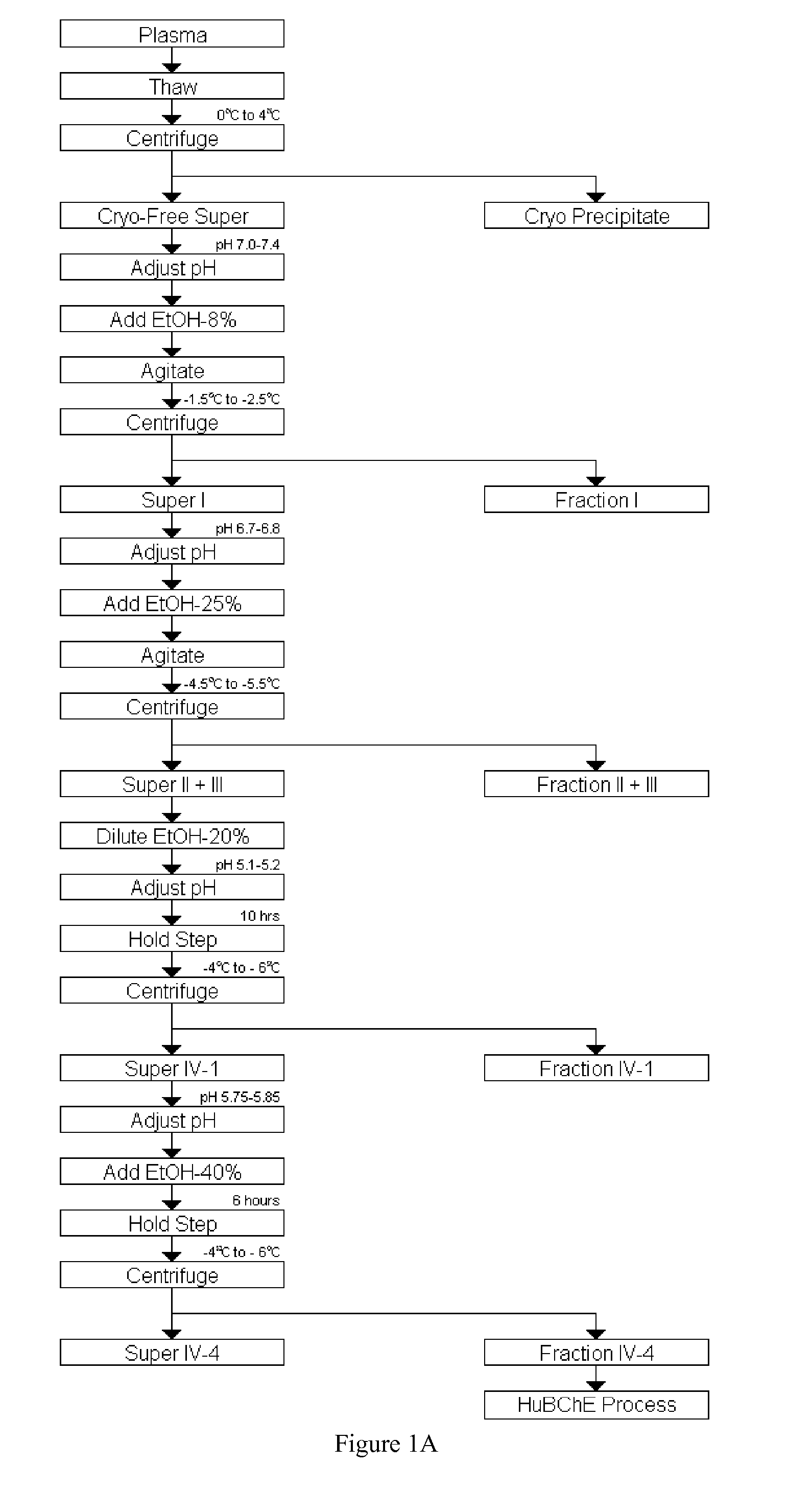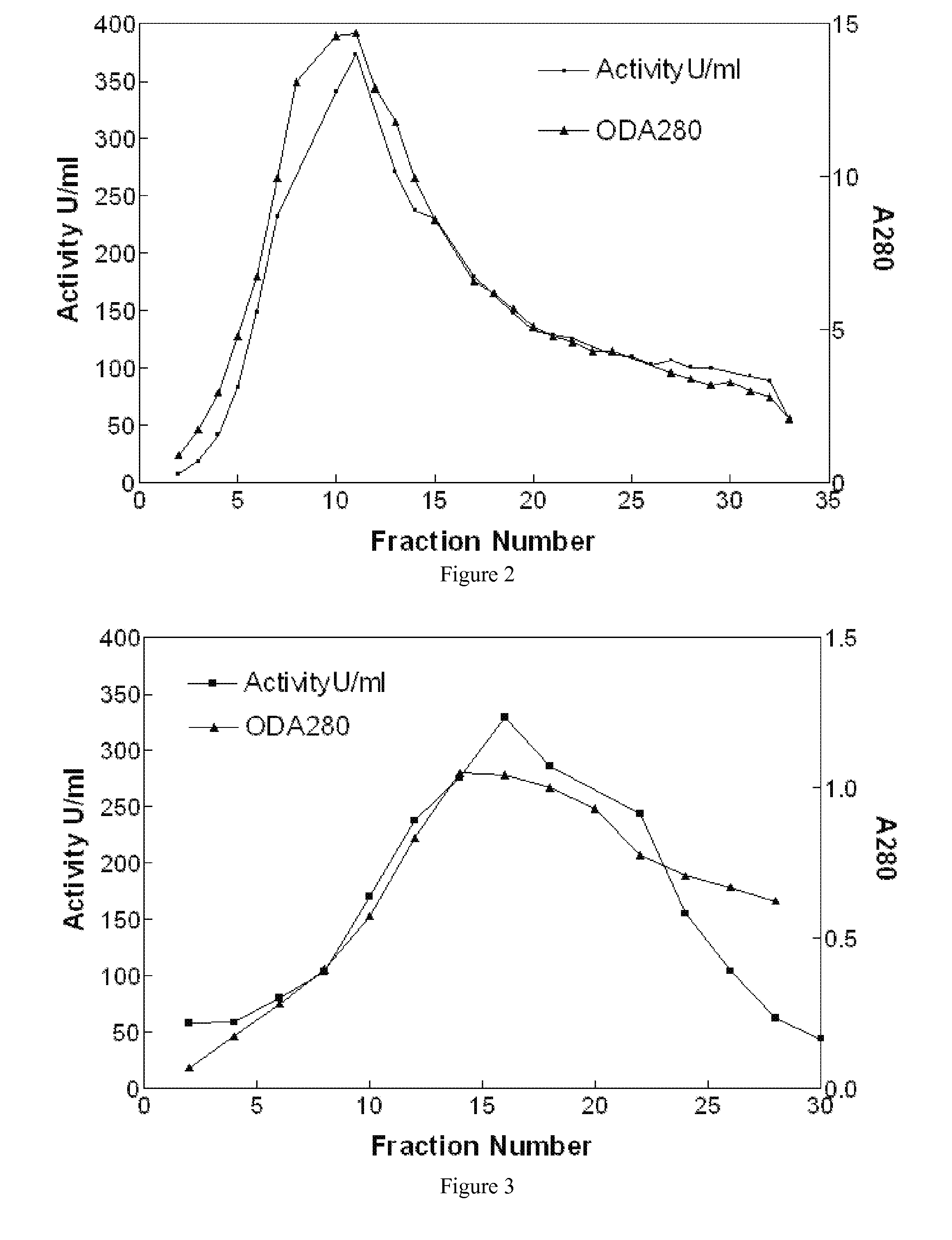Large-Scale Production of Human Serum Butyrylcholinesterase as a Bioscavenger
a technology of human serum and cholinesterase, which is applied in the field of large-scale production of human serum butyrylcholinesterase, can solve the problems of increasing the threat to military and civilian populations, serious medical challenges posed by chemical warfare agents to both military and civilian health care systems, and death by respiratory failure, etc., to prevent, treat, or inhibit the toxicity of an organophosphorus compound
- Summary
- Abstract
- Description
- Claims
- Application Information
AI Technical Summary
Benefits of technology
Problems solved by technology
Method used
Image
Examples
Embodiment Construction
[0026] As provided herein, a combination of resuspension of Cohn Fraction IV-4 paste, its pH adjustment, centrifugation, and filtration, followed by procainamide affinity and DEAE fast-flow ion-exchange chromatography was developed to purify tens of grams of HuBChE.
[0027] Cohn Fraction IV-4 paste, a by-product of human plasma generated during the production of human proteins, such as γ-globulin, was identified as a rich source of HuBChE. This paste contains about 150 mg of enzyme per kg, which is much higher than human plasma and contains much lesser quantities of other plasma proteins due to the fractionation steps deployed in the production process. Usually Cohn Fraction IV-4 is regarded as a waste product of the fractionated plasma and is disposed of after addition of large quantities of Celite®. This results in the inactivation of most of the enzyme activity reducing its activity to about 3 mg / kg, thereby rendering this paste unsuitable for the isolation of HuBChE. Therefore, t...
PUM
| Property | Measurement | Unit |
|---|---|---|
| retention time | aaaaa | aaaaa |
| retention time | aaaaa | aaaaa |
| volume | aaaaa | aaaaa |
Abstract
Description
Claims
Application Information
 Login to View More
Login to View More - R&D
- Intellectual Property
- Life Sciences
- Materials
- Tech Scout
- Unparalleled Data Quality
- Higher Quality Content
- 60% Fewer Hallucinations
Browse by: Latest US Patents, China's latest patents, Technical Efficacy Thesaurus, Application Domain, Technology Topic, Popular Technical Reports.
© 2025 PatSnap. All rights reserved.Legal|Privacy policy|Modern Slavery Act Transparency Statement|Sitemap|About US| Contact US: help@patsnap.com



